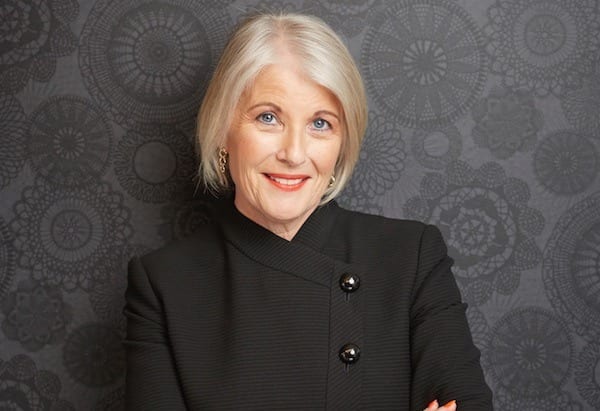But in 2020, we know from ABS data that 95 per cent of paid parental leave is still taken by women, something one of the initial architects of the scheme, former MP Jenny Macklin, says she’d hoped would be avoided.
Macklin is interviewed on the latest episode of the Women Are The Business podcast by the University of Melbourne. Episode one tackles the issue of paid parental leave, including how it came about, why it’s important and where we go from here.
Macklin shares her own experience of managing work alongside having her first child, at a time when no paid parental leave was available. Her husband, a maths teacher, wanted to take an unpaid year off to help care for the child, but saw his request initially rejected, before later being approved.
Now, the 18 weeks’ minimum wage on offer is often taken for granted by many new parents. Research shows it’s delivered significant benefits for mothers, including the unexpected consequence of seeing more women returning to work one year after having a baby.
But yet just one in 20 new Dads are taking the leave available for primary carers, and the two weeks of ‘Dad and Partner Pay’ on offer is seen as largely inadequate for enabling fathers to effectively bond with a new babty.

Macklin says that as they were developing the scheme, she was always conscious of the need to ensure Dads were covered. “I wanted to make sure that it was paid parental leave (over maternity leave). I did want to acknowledge that mothers give birth and need to recover, but I also wanted the leave to be transferrable between parents.
“That’s one of the disappointing things that the evaluation shows that actually in the vast majority of cases, it’s not transferred. In the vast majority of families, the mother is taking the leave, not the father.”
She suggests that while the gender pay gap is largely responsible for preventing many fathers from taking such leave, a number of cultural hurdles also stand in the way. It’s still seen as unusual for men to take the time off, despite research showing men do want to take the leave.
Libby Lyons, director of the Workplace Gender Equality Agency, believes that men need more support if we’re ever going to see a cultural shift on the issue.
“Men’s request for flexible work are twice as likely to be declined as women’s are,” she tells the podcast. “In order to address the real issues of discrimination facing women in society, we actually need to address the bias and discrimination that men face, particularly around part time work, parental leave and flexible work.

“Until we address those problems, women aren’t going to get anywhere. In a heterosexual relationship, if a man is not offered paid parental leave, what choice does that couple have?”
So what comes first, a shift in social attitudes or a policy change overhauling the paid parental leave system?
According to guests on the podcast, it’s a two way process.
Paid parental leave is still not even a decade old in Australia, a country that was slow to get moving on addressing the needs of working parents, meaning it was previously left only to parents to negotiate something with their employers. Our scheme is still one of the lowest in the world in terms of the length of time and payment available to new parents.
In some countries, it’s common for both parents to be offered up to three months’ leave.
As Macklin notes, no one in Australia could now imagine us being a country without universal healthcare, yet the introduction of Medicare started and evolved during her lifetime.
With younger generations demanding more opportunities and placing more expectations around being a working parent — along with the topic getting more airtime — she’s optimistic on the possibility for change.
Meanwhile, a wider take-up of paid parental leave by fathers could result in benefits that extend beyond bonding time with a new child.
A Professor of Economics Guyonne Kalb, found when she was part of the team enlisted to review the Australian paid parental leave scheme once it came in, a surprising benefit was seeing how it enabled women to retain a stronger connection to their employers.
“I think the paid parental leave in some way tells women ‘it’s okay to take time off. We understand that you need to recover, be with your child, but we will be really happy if you would come back afterwards.’”
We’ll be featuring stories on all eight episodes of this podcast here on Women’s Agenda, thanks to our partnership with the Faculty of Business and Economics at The University of Melbourne.
Subscribe to the series on Spotify or Apple Podcasts.
Click here to see the full: #WomenAreTheBusiness series



